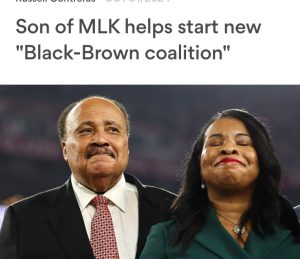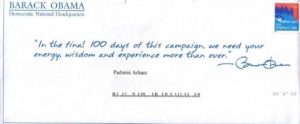SEC Lawsuit against Goldman Sachs
April 18, 2010
By Padmini Arhant
The Securities and Exchange Commission filed lawsuit against Goldman Sachs on the toxic derivatives camouflaged with the internationally renowned investment firm, authenticating the risky mortgage securities sold to trusting investors in the domestic and global financial market.
Goldman Sachs is engaged in Investment Banking, Trading and Principal Investments, and Asset Management and Securities Services.
Needless to state that sub-prime mortgage is synonymous to the ‘speed boat’ designed for a fatal crash due to the deliberate sabotage. Sure enough, it had a negative impact on the financial and housing market that contributed to a precipitous economic decline worldwide.
The savvy designers protected their own investment with ‘insurance’ on the ‘abyss’ through yet another global conglomerate ‘AIG,’ technically partners in the ingenious profit oriented craft.
Why?
Because, the insurance companies grill the ‘regular folks’ when applying for any insurance to minimize risk exposure.
Even the trivial finding in the applicant’s background is used as the grounds for rejection or the cause for high premium – e.g. the health insurance industry.
It’s noteworthy that both Goldman Sachs and AIG were swiftly bailed out with taxpayers’ funds on the “Too Big to fail,” concept.
As a result, the fire starters were salvaged by the taxpayers.
The fire sale was organized for the Treasury to buy the damaged goods at the taxpayers’ expense from the banks on the brink of collapse.
————————————————————————————-
Goldman Sachs reportedly,
Wikipedia.org – Thank you.
“Goldman also received $10 billion preferred stock investment from the U.S. Treasury in October 2008, as part of the Troubled Asset Relief Program (TARP).
In June 2009, Goldman Sachs repaid the U.S. Treasury’s TARP investment, with 23% interest (in the form of $318 million in preferred dividend payments and $1.418 billion in warrant redemptions).
New York Attorney General Andrew Cuomo questioned Goldman’s decision to pay 1556 employees bonuses of at least $1 million after it received TARP funds in 2008.
In December 2009, Goldman announced their top 30 executives will be paid year-end bonuses in restricted stock, with clawback provisions, that must go unsold for five years.”
It’s essential to emphasize that Goldman Sachs is not new to controversy.
——————————————————————————————-
Source: Wikipedia.org – Thank you.
Controversies
In 1986, David Brown was convicted of passing inside information to Ivan Boesky on a takeover deal.
Robert Freeman, who was a senior Partner, who was the Head of Risk Arbitrage, and,
Who was a protégé of Robert Rubin, was also convicted of insider trading, for his own account and for the firm’s account.
On November 11, 2008, the Los Angeles Times reported that Goldman Sachs, which earned $25M from underwriting California bonds, had advised other clients to “short” those bonds.
Shorting is essentially betting that the state will default on the bonds, which serves to drive up the cost of the issue to the state.
During 2008 Goldman Sachs came under criticism for an apparent revolving-door relationship in which its employees and consultants have moved in and out of high level US Government positions, where there may exist the potential for a conflict of interest.
Former Treasury Secretary Hank Paulson was a former CEO of Goldman Sachs.
Additional controversy attended the selection of former Goldman Sachs lobbyist Mark Patterson as chief of staff to Treasury Secretary Geithner, despite President Barack Obama’s campaign promise that he would limit the influence of lobbyists in his administration.
During 2010, Goldman Sachs has been accused for its involvement in the 2010 European sovereign debt crisis.
Goldman Sachs between the years 1998-2009 has been reported to systematically helped the Greek government to mask its national true debt facts.
In September 2009 though, Goldman Sachs among others, created a special Credit Default Swap (CDS) index for the cover of high risk national debt of Greece.[66] This led the interest-rates of Greek national bonds to a very high level, leading the Greek economy very close to bankruptcy in March 2010.”
———————————————————————————————-
Actions in the 2007–2008 subprime mortgage crisis:
Despite the 2007 subprime mortgage crisis, Goldman was able to profit from the collapse in subprime mortgage bonds in the summer of 2007 by selling subprime mortgage-backed securities short.
Two Goldman traders, Michael Swenson and Josh Birnbaum, are credited with bearing responsibility for the firm’s large profits during America’s sub-prime mortgage crisis.
The pair, who are part of Goldman’s structured products group in New York, made a profit of $4 billion by “betting” on a collapse in the sub-prime market, and shorting mortgage-related securities.
By summer of 2007, they persuaded colleagues to see their point of view and talked around skeptical risk management executives.
The firm initially avoided large subprime writedowns, and achieved a net profit due to significant losses on non-prime securitized loans being offset by gains on short mortgage positions.
Its sizable profits made during the initial subprime mortgage crisis led the New York Times to proclaim that Goldman Sachs is without peer in the world of finances.
The firm’s viability was later called into question as the crisis intensified in September 2008.
Allan Sloane of Forbes, a financial writer of reputation, wrote a referenced article on 15 October 2007, at the time the crisis had begun to unravel.
It appeared on CNN’s website: “So let’s reduce this macro story to human scale.
Meet GSAMP Trust 2006-S3, a $494 million drop in the junk-mortgage bucket, part of the more than half-a-trillion dollars of mortgage-backed securities issued last year.
We found this issue by asking mortgage mavens to pick the worst deal they knew of that had been floated by a top-tier firm – and this one’s pretty bad.
“It was sold by Goldman Sachs (Charts, Fortune 500) – GSAMP originally stood for Goldman Sachs Alternative Mortgage Products but now has become a name itself, like AT&T and 3M.
“This issue, which is backed by ultra-risky second-mortgage loans, contains all the elements that facilitated the housing bubble and bust.
It’s got speculators searching for quick gains in hot housing markets;
It’s got loans that seem to have been made with little or no serious analysis by lenders; and finally,
It’s got Wall Street, which churned out mortgage “product” because buyers wanted it.
As they say on the Street, ‘When the ducks quack, feed them.'”
Weeks of chaos that sent Lehman Brothers into bankruptcy and led to the rushed sale of Merrill Lynch & Co. to Bank of America Corp.
According to a 2009 Brand Asset Valuator survey taken of 17,000 people nationwide, the firm’s reputation suffered in 2008 and 2009, and rival Morgan Stanley was respected more than Goldman Sachs, a reversal of the sentiment in 2006.
Goldman refused to comment on the findings.
—————————————————————————————
2. According to http://www.wsws.org/articles/2008/sep2008/paul-s23.shtml – Thank you.
Published by the International Committee of the Fourth International (ICFI)
Who is Henry Paulson?
By Tom Eley, 23 September 2008
Henry Paulson rose through the ranks of Goldman Sachs, becoming a partner in 1982, co-head of investment banking in 1990, chief operating officer in 1994.
In 1998, he forced out his co-chairman Jon Corzine “in what amounted to a coup,” according to New York Times economics correspondent Floyd Norris, and took over the post of CEO.
Goldman Sachs is perhaps the single best-connected Wall Street firm.
Its executives routinely go in and out of top government posts.
Corzine went on to become US senator from New Jersey and is now the state’s governor.
Corzine’s predecessor, Stephen Friedman, served in the Bush administration as assistant to the president for economic policy and as chairman of the National Economic Council (NEC).
Friedman’s predecessor as Goldman Sachs CEO, Robert Rubin, served as chairman of the NEC and later treasury secretary under Bill Clinton.
Agence France Press, in a 2006 article on Paulson’s appointment,
“Has Goldman Sachs Taken Over the Bush Administration?” noted that, in addition to Paulson,
“[t]he president’s chief of staff, Josh Bolten, and the chairman of the Commodity Futures Trading Commission, Jeffery Reuben, are Goldman alumni.”
Prior to being selected as treasury secretary, Paulson was a major individual campaign contributor to Republican candidates, giving over $336,000 of his own money between 1998 and 2006.
Since taking office, Paulson has overseen the destruction of three of Goldman Sachs’ rivals.
In March, Paulson helped arrange the fire sale of Bear Stearns to JPMorgan Chase.
Then, a little more than a week ago, he allowed Lehman Brothers to collapse,
While simultaneously organizing the absorption of Merrill Lynch by Bank of America.
This left only Goldman Sachs and Morgan Stanley as major investment banks,
Both of which were converted on Sunday into bank holding companies, a move that effectively ended the existence of the investment bank as a distinct economic form.
Paulson bears a considerable amount of personal responsibility for the crisis.
Paulson, according to a celebratory 2006 Business Week article entitled –
“Mr. Risk Goes to Washington,” was “one of the key architects of a more daring Wall Street, where securities firms are taking greater and greater chances in their pursuit of profits.”
Under Paulson’s watch, that meant “taking on more debt: $100 billion in long-term debt in 2005, compared with about $20 billion in 1999.
It means placing big bets on all sorts of exotic derivatives and other securities.”
According to the International Herald Tribune,
Paulson “was one of the first Wall Street leaders to recognize how drastically investment banks could enhance their profitability by betting with their own capital instead of acting as mere intermediaries.”
Paulson “stubbornly assert[ed] Goldman’s right to invest in, advise on and finance deals, regardless of potential conflicts.”
Paulson then handsomely benefited from the speculative boom.
This wealth was based on financial manipulation and did nothing to create real value in the economy.
On the contrary, the extraordinary enrichment of individuals like Paulson was the corollary to:
The dismantling of the real economy,
The bankrupting of the government and,
The impoverishment of masses the world over.
Paulson was compensated to the tune of $30 million in 2004 and took home $37 million in 2005.
In his career at Goldman Sachs he built up a personal net worth of over $700 million, according to estimates.
——————————————————————————————–
3. By Jackie Calmes – Published: Monday, November 24, 2008 – Thank you.
Obama’s economic team shows influence of Robert Rubin – with a difference
WASHINGTON — It is testament to the star power of former Treasury Secretary Robert Rubin among many Democrats that as Barack Obama fills out his economic team, a virtual Rubin constellation is taking shape.
The president-elect used the announcement Monday that he was appointing two Rubin protégés,
Timothy Geithner as Treasury secretary and Lawrence Summers as senior White House economic adviser,
To underscore his determination to step aggressively into a economic leadership vacuum in Washington while also maintaining continuity with the Bush administration before the transition of power Jan. 20.
Obama is expected to soon announce the appointment of another Rubin protégé, Peter Orszag, as White House budget director.
And even the headhunters for Obama have Rubin ties: Michael Froman, who was Rubin’s chief of staff in the Treasury Department and followed him to Citigroup, and James Rubin, Robert Rubin’s son.
Geithner, Summers and Orszag have all been followers of the economic formula that came to be called Rubinomics: balanced budgets, free trade and financial deregulation.
The combination was credited with fueling the prosperity of the 1990s.
But times have changed since then.
On Wall Street, Rubin is facing questions about his role as director of Citigroup, given the bank’s current troubles, and during the weekend held several discussions with Treasury Secretary Henry Paulson as a government rescue of Citigroup was organized.”
“What worries me is there is not one person in the senior group who is the outsider to this club.
And that’s particularly ironic, given Barack Obama’s bias toward copying Lincoln’s ‘team of rivals,”‘ said Robert Kuttner, a colleague of Bernstein’s at the liberal Economic Policy Institute who has written a book, “Obama’s Challenge,” on free-spending, pro-regulatory approaches to the economic crisis.
“Where is the diversity of opinion in this economic team?” he said.
————————————————————————————————–
Thank you.
Padmini Arhant
Finance Sector and Economic Impact
August 31, 2009
By Padmini Arhant
When the Bush administration officially recognized the economic recession in late December 2007, the malignant cancer in the financial sector was widespread – originating from gross mismanagement, underhand dealings, some in breach of lenient SEC regulations… a scenario analogous to the health abuse by overindulging individuals submitting to a potentially terminal illness.
Upon diagnosis, the prognosis called for a radical treatment to prolong life. Hence, the former administration executed a series of financial bailouts commencing with Bear Stearns, AIG, including major and minor banks bailout to a tune of $700 billion TARP (Toxic Assets Relief Program) fund.
Incidentally, the former Treasury Secretary Henry Paulson bound by vested interest and commitment to his alma mater Goldman Sachs let the comparable investment group Lehman Brothers submerge into insolvency.
Is cherry picking a coincidence or key Treasury representative fulfilling obligations to the dominant force Goldman Sachs in the finance industry?
Please refresh your thoughts after reviewing the blogpost ‘Bailout Debacle’ March 22, 2009 listed under Economy and Business category at www.padminiarhant.com
In this context, the cited article revealing facts behind the bailout is attention worthy.
According to http://www.wsws.org/articles/2008/sep2008/paul-s23.shtml – Thank you.
Published by the International Committee of the Fourth International (ICFI)
Who is Henry Paulson?
By Tom Eley, 23 September 2008
“Henry Paulson rose through the ranks of Goldman Sachs, becoming a partner in 1982, co-head of investment banking in 1990, chief operating officer in 1994. In 1998, he forced out his co-chairman Jon Corzine “in what amounted to a coup,” according to New York Times economics correspondent Floyd Norris, and took over the post of CEO.
Goldman Sachs is perhaps the single best-connected Wall Street firm. Its executives routinely go in and out of top government posts. Corzine went on to become US senator from New Jersey and is now the state’s governor. Corzine’s predecessor, Stephen Friedman, served in the Bush administration as assistant to the president for economic policy and as chairman of the National Economic Council (NEC). Friedman’s predecessor as Goldman Sachs CEO, Robert Rubin, served as chairman of the NEC and later treasury secretary under Bill Clinton.
Since taking office, Paulson has overseen the destruction of three of Goldman Sachs’ rivals.
In March, Paulson helped arrange the fire sale of Bear Stearns to JPMorgan Chase. Then, a little more than a week ago, he allowed Lehman Brothers to collapse, while simultaneously organizing the absorption of Merrill Lynch by Bank of America.
This left only Goldman Sachs and Morgan Stanley as major investment banks, both of which were converted on Sunday into bank holding companies, a move that effectively ended the existence of the investment bank as a distinct economic form.
These bailouts have been designed to prevent a chain reaction collapse of the world economy, but more importantly, they aimed to insulate and even reward the wealthy shareholders, like Paulson, primarily responsible for the financial collapse.
Paulson bears a considerable amount of personal responsibility for the crisis.
Paulson then handsomely benefited from the speculative boom. This wealth was based on financial manipulation and did nothing to create real value in the economy. On the contrary, the extraordinary enrichment of individuals like Paulson was the corollary to the dismantling of the real economy, the bankrupting of the government, and the impoverishment of masses the world over.
Paulson was compensated to the tune of $30 million in 2004 and took home $37 million in 2005. In his career at Goldman Sachs he built up a personal net worth of over $700 million, according to estimates. “
————————————————————————————————–
True Perspective: By Padmini Arhant
The entire economic meltdown ceremoniously attributed to the financial sector’s wayward unruly conduct in the absence of limited or no regulation. Typically, it’s a free market voluntarily surrendering to a free fall after skyrocketing profits in the pockets of privileged few in the society.
Who did the private enterprise otherwise the market system’s oligarchs approach for salvation?
It was none other than the taxpayers of the economy represented by the government.
It’s poignant to underscore the convenience for private sectors to seek the taxpayer i.e. government’s assistance when they are drowning and fleetingly dismiss the same government as an incompetent, redundant agency during the buoyancy like in the health care battle.
The day is not far when the health care and insurance industry configured to the obscene profit driven settings mimic their counterpart finance industry imploring the taxpayers/consumers bailout.
When the wealth management industry succumbs to their own greed ladened follies, can the health care and insurance industry sustain the malpractice at the economy’s expense?
If there is any respect for the laws of nature or ethical consideration, the key economic components such as the finance, health industry and others would realize that universally every substance has a limited potential to thrive and exceed performance level at any given time. The mankind periodically experienced catastrophic blows in the form of severe economic recession to ‘Great Depression’ due to the prevailing markets inertia.
Still, the lesson is never learned by the delusional segment forging permanency on this planet; choose to remain confined to the improbable cause in wealth amassment.
Now directing focus on the finance sector, the ‘artful dodger’, a nickname of the Charles Dickens’ melancholy character ‘Oliver Twist’ when turned down for more porridge, despite the courteous magic word ‘please,’ was never discouraged to maneuver the situation in personal favor.
Unlike the character ‘Oliver Twist’ a victim of severe socio-economic disparity…parallel to the modern twenty first century reality, the finance sector is well armed with tactics adherence to the rule of law in appearance but decisively biting the hands that feeds them, i.e. the consumers and taxpayers.
What are the latest strategies by the finance industry to clean up the mess on their balance sheets?
The current trend in the finance sector is adapting to the new age attraction i.e. presentation and mass appeal even if it is lacking in substance. If anything achieved from the domino effects by the financial sector, it is the mastery of unsavory techniques to impress shareholders at the consumers’ peril.
During the bailouts, both the prior and the incumbent administrations were unequivocally guaranteed instant revival of the lending activity, a predominant factor in the liquidity crisis exacerbating the economy until date.
It’s been nearly twelve to eighteen months since the infamous massive bailouts with no relief to the average citizen, retailers or the small businesses, crucial for the economic recovery. The economy deprived of the consumer spending flow because of the financial institutions’ stringent policy to hoard the taxpayers’ funds received in the form of bailouts at zero percent or nominal interest rate. Instead the taxpayer bailout is unabashedly used for extravagant bonuses to the architects of the financial calamity.
Although, the Obama administration recently capped the finance charges and interest rates on credit card borrowings to ease the extraordinary burden on average citizens, the industry leapfrogged Congress with discretionary interest rates not limited to atrocious 29.9% APR and threatening to increase further on default payments.
Another proactive measure by the banks in an effort to window dressing the balance sheet was minimizing risk exposure related to credit card and consumer lending. The industry defiantly targets the vulnerable groups like students, homeowners and the lower to median income consumers with abrupt cancellation of accounts in good standing.
The irony is noteworthy. It’s considered perfectly normal if the finance industry absconded their responsibility to the American taxpayers/creditors not barring any accountability to the oversight committee regarding the bailout investments. However, the then taxpayers/creditors as consumers/borrowers now subject to scrutiny and unprecedented means by the same financial institutions holding the mantle to lending and borrowing.
While the myriad of finance industry borrowed taxpayer funds at zero or negligible interest rate, the sector in return either withholding financing in most cases or lending at an exorbitant rate to the consumers who are also the creditors.
In the housing market, the situation synchronizes with the other lending areas such as credit card, personal loans etc. The reason for the agonizing slump in the real estate across the nation squarely falls back on the commercial banks reluctant to unleash the cash flow to qualified first homebuyers and responsible mortgagees/homeowners unable to purchase or refinance their homes. The stranglehold on consumer borrowing precipitates the foreclosures notwithstanding the vertical decline in home sales and values.
Again, the White House initiatives to restrain foreclosures and assist primary residence owners through TARP fund allocation need evaluation as the financial institutions are focused on ‘business as usual’ and not measuring up to the rigorous standard that exists for average consumers while the bailed out financial industry borrowers exempt from it.
The status quo is inadequate and compromises the high value homes in the government pursuit to rescue the conforming loans, i.e. Fannie Mae and Freddie Mac toxic assets. Fannie Mae and Freddie Mac, is a private company backed by government funds.
Not surprisingly, the illicit practice permeated to the commercial real estate affecting the prospects in that segment.
Home equity, the major and sometimes the only asset for overwhelming majority being inaccessible along with the spiraling health care and insurance costs for families, the overall economic impact is enormous forcing many to bankruptcy accelerated by the escalating unemployment rate.
Did the bailout beneficiaries show any evidence to qualify for funding?
Supposedly not, then why should they be allowed to run the economy into muck and handsomely rewarded with taxpayer bailout for the colossal failure in financial history?
Where are the taxpayer funds invested and why are they not held accountable thus far?
Is the financial market granted constitutional immunity?
And if not,
What is holding the legislators from intervening on behalf of the electorate to probe the public affairs maintained as private matter by the industry?
Meanwhile, the investment group, Goldman Sachs implicated for alleged insider information to high value investors through trade specialists deserve proper investigation and due process. The SEC regulations must apply to all without exception in absolute transparency.
With the holiday season approaching, the consumer spending is vital to expedite the stagnant economic growth. As stated above, the positive development in housing and job market intertwined with the investment pace, only possible through private sector faithful participation in lending and reactivating the economy.
Unless and until the finance sector across the board, the commercial, investment and insurance industries get their act together and relinquish the ‘subprime’ syndrome, the sagging economy will continue and eventually consume the source, the financial groups.
The financial sector is obligatory to the taxpayers as creditors and borrowers particularly with respect to the disproportionate bailouts.
Finally, with no further procrastination on the financial markets audit, it’s imperative for the Congress appointed oversight to obtain legitimate explanation on investments and lending abstinence. Any dissatisfactory response and non-cooperation by the industry must be pursued with mandatory judicial protocol.
Thank you.
Padmini Arhant
Bush Stimulus Package
July 23, 2009
By Padmini Arhant
Presentation of Bush Stimulus Package details
From: Stimuls Package details – Thanks
Source: http://www.stimuluspackagedetails.com/bush.html
Bush Stimulus Packages
In 2008, the Bush Administration handed out a slew of economic stimulus packages.
Under President George Bush’s administration, the Federal government gave
$29 billion to bail out Bear Stearns,
$178 billion to American taxpayers in the form of economic stimulus checks,
$300 billion to bail out American homeowners,
$200 billion to bail out Fannie Mae and Freddie Mac,
$150 billion to bailout AIG, and
$700 billion to bail out banks (TARP).
Total Bush Administration Bailout – $1.557 trillion dollars i.e. $1 trillion and $557 billion dollars.
Timelines Of The Bush Economic Stimulus Packages
Following is a timeline of the economic stimulus packages, in chronological order.
March 2008 – $29 Billion Stimulus Package – Wall Street Bailout
The Federal Reserve stepped in to prevent the collapse of Bear Stearns (one of the world’s largest investment banks and brokerage firms) by guaranteeing $29 billion worth of potential losses in its battered portfolio. This provided enough economic stimulus for JP Morgan Chase to take over the beleaguered firm.
May 2008 – $178 Billion Stimulus Package – Average American Bailout
The U.S. Treasury provided an economic stimulus package to American taxpayers in the form of $600 economic stimulus checks for individuals and $1,200 economic stimulus payments for couples.
That cost the government $100 billion, and they threw in another $68 billion in tax breaks for businesses, $8 billion to increase unemployment benefits from 26 weeks to 39 weeks, and a $4 billion economic stimulus package to be doled out to states and local municipalities to buy and rehab foreclosed properties.
July 2008 – $300 Billion Stimulus Package – Homeowners Bailout
The Bush Administration committed $300 billion for 30-year fixed rate mortgages for at-risk borrowers, as well as tax credits for first-time homebuyers, who could be eligible to receive up to a $7,500 tax credit.
September 2008 – $200 Billion Stimulus Package – Fannie Mae and Freddie Mac Bailout
Fannie Mae and Freddie Mac (privately owned mortgage companies that are backed by the federal government) were about to fail, due to declining house prices and rising foreclosures.
The Bush Administration stepped in with a $200 billion economic stimulus package and placed Fannie Mae and Freddie Mac and their $5 trillion in home loans in “temporary conservatorship,” to be supervised by the Federal Housing Finance AgeSeptember 2008 – $50 Billion Stimulus Package To Guarantee Money Market Funds
When the economic crisis reached a crescendo, Americans began to pull their money out of money market funds – historically considered to be the safest investment. To stop the bloodshed, the U.S. Treasury agreed to guarantee up to $50 billion, for up to a year.
September 2008 – $25 Billion Stimulus Package – Automakers Bailout
In an attempt to stave off bankruptcies for the “Big 3 automakers,” the Bush Administration gave General Motors, Ford, and Chrysler $25 billion in low-interest loans.
September – November 2008 – $150 Billion Stimulus Package – AIG Bailout
With the world’s largest insurance company in dire straits and 74 million clients at risk, the American government chipped in and gave AIG (American Insurance Group) $150 billion in a stimulus package that included: loans, purchase of toxic assets, and purchase of preferred shares.
October 2008 – $700 Billion Stimulus Package – Banks Bailout
The Bush Administration, under the umbrella of the U.S. Treasury, committed $700 billion in economic stimulus money under TARP (Troubled Asset Relief Program). By many accounts, if this economic stimulus money hadn’t been injected, credit between banks would have frozen overnight, and not only the American economy, but also the global economy, would have seized up.
———————————————————————————————
Is The Economic Stimulus Package Working?
“Is the economic stimulus package working” seems to be the question on most people’s minds.
But which economic stimulus package are you talking about?
Bear Sterns was taken over by JP Morgan Chase, so maybe that $29 billion economic stimulus plan worked.
We all got our economic stimulus checks in 2008, but we didn’t necessarily put them back into the economy, so that $178 billion might not have been well-spent.
The $300 billion mortgage stimulus, “Hope For Homeowners,” awarded in July 2008 didn’t work very well either, because few people took an interest in the program. While proponents of this particular economic stimulus package estimated that 400,000 homeowners could be helped over a three-year period, in the first month, only 111 had applied.
The $200 billion economic stimulus handout to Fannie Mae and Freddie Mac, the mortgage giants, stabilized them enough to prevent collapse.
The $50 billion economic stimulus to stabilize money market funds might have averted a disaster.
The $150 billion doled out to AIG, the insurance giant, prevented their closure, but must not have completely solved the problem since AIG came back for $30 billion more less than six months later, even as they were awarding $165 million in bonuses to their top executives.
The $25 billion given to the Big 3 automakers, Chrysler, Ford, and GM, allowed them to live to see another day, but they remain on the brink of disaster.
The $700 billion bank bailout, given in extreme haste in October 2008, might have kept the banks functioning, but no one really knows where that money went or what was done with it, so it’s hard to judge whether TARP is working.
$700 Billion Bush Stimulus
The $700 billion Troubled Asset Relief Program, (TARP), given out by the George Bush Administration in October 2008. No one can seem to track down any details on this. The money was given to banks with the goal that they would lend it to people. They didn’t seem to do that, but no accountability was written into the hastily concocted plan, which seems to have been concocted in a matter of days, in a “cocktail napkin” format.
And that was just the economic stimulus packages of 2008.
Bush Stimulus Package
July 23, 2009
By Padmini Arhant
Presentation of Chronological Stimulus Package Details:
From: Stimulus Package Details
Source: http://www.stimuluspackagedetails.com/bush.html – Thanks.
Bush Stimulus Packages
In 2008, the Bush Administration handed out a slew of economic stimulus packages.
Under President George Bush’s administration, the Federal government gave
$29 billion to bail out Bear Stearns,
$178 billion to American taxpayers in the form of economic stimulus checks,
$300 billion to bail out American homeowners,
$200 billion to bail out Fannie Mae and Freddie Mac,
$150 billion to bailout AIG, and
$700 billion to bail out banks (TARP).
Total Bush Administration Bailout – $1.557 trillion dollars i.e. $1 trillion and $557 billion dollars.
Timelines Of The Bush Economic Stimulus Packages
Following is a timeline of the economic stimulus packages, in chronological order.
March 2008 – $29 Billion Stimulus Package – Wall Street Bailout
The Federal Reserve stepped in to prevent the collapse of Bear Stearns (one of the world’s largest investment banks and brokerage firms) by guaranteeing $29 billion worth of potential losses in its battered portfolio. This provided enough economic stimulus for JP Morgan Chase to take over the beleaguered firm.
May 2008 – $178 Billion Stimulus Package – Average American Bailout
The U.S. Treasury provided an economic stimulus package to American taxpayers in the form of $600 economic stimulus checks for individuals and $1,200 economic stimulus payments for couples. That cost the government $100 billion, and they threw in another $68 billion in tax breaks for businesses, $8 billion to increase unemployment benefits from 26 weeks to 39 weeks, and a $4 billion economic stimulus package to be doled out to states and local municipalities to buy and rehab foreclosed properties.
July 2008 – $300 Billion Stimulus Package – Homeowners Bailout
The Bush Administration committed $300 billion for 30-year fixed rate mortgages for at-risk borrowers, as well as tax credits for first-time homebuyers, who could be eligible to receive up to a $7,500 tax credit.
September 2008 – $200 Billion Stimulus Package – Fannie Mae and Freddie Mac Bailout
Fannie Mae and Freddie Mac (privately owned mortgage companies that are backed by the federal government) were about to fail, due to declining house prices and rising foreclosures. The Bush Administration stepped in with a $200 billion economic stimulus package and placed Fannie Mae and Freddie Mac and their $5 trillion in home loans in “temporary conservatorship,” to be supervised by the Federal Housing Finance Agency.
September 2008 – $50 Billion Stimulus Package To Guarantee Money Market Funds
When the economic crisis reached a crescendo, Americans began to pull their money out of money market funds – historically considered to be the safest investment. To stop the bloodshed, the U.S. Treasury agreed to guarantee up to $50 billion, for up to a year.
September 2008 – $25 Billion Stimulus Package – Automakers Bailout
In an attempt to stave off bankruptcies for the “Big 3 automakers,” the Bush Administration gave General Motors, Ford, and Chrysler $25 billion in low-interest loans.
September – November 2008 – $150 Billion Stimulus Package – AIG Bailout
With the world’s largest insurance company in dire straits and 74 million clients at risk, the American government chipped in and gave AIG (American Insurance Group) $150 billion in a stimulus package that included: loans, purchase of toxic assets, and purchase of preferred shares.
October 2008 – $700 Billion Stimulus Package – Banks Bailout
The Bush Administration, under the umbrella of the U.S. Treasury, committed $700 billion in economic stimulus money under TARP (Troubled Asset Relief Program). By many accounts, if this economic stimulus money hadn’t been injected, credit between banks would have frozen overnight, and not only the American economy, but also the global economy, would have seized up.
————————————————————————————————–
Is The Economic Stimulus Package Working?
“Is the economic stimulus package working” seems to be the question on most people’s minds.
But which economic stimulus package are you talking about?
Bear Sterns was taken over by JP Morgan Chase, so maybe that $29 billion economic stimulus plan worked.
We all got our economic stimulus checks in 2008, but we didn’t necessarily put them back into the economy, so that $178 billion might not have been well-spent.
The $300 billion mortgage stimulus, “Hope For Homeowners,” awarded in July 2008 didn’t work very well either, because few people took an interest in the program. While proponents of this particular economic stimulus package estimated that 400,000 homeowners could be helped over a three-year period, in the first month, only 111 had applied.
The $200 billion economic stimulus handout to Fannie Mae and Freddie Mac, the mortgage giants, stabilized them enough to prevent collapse.
The $50 billion economic stimulus to stabilize money market funds might have averted a disaster.
The $150 billion doled out to AIG, the insurance giant, prevented their closure, but must not have completely solved the problem since AIG came back for $30 billion more less than six months later, even as they were awarding $165 million in bonuses to their top executives.
The $25 billion given to the Big 3 automakers, Chrysler, Ford, and GM, allowed them to live to see another day, but they remain on the brink of disaster.
The $700 billion bank bailout, given in extreme haste in October 2008, might have kept the banks functioning, but no one really knows where that money went or what was done with it, so it’s hard to judge whether TARP is working.
And that was just the economic stimulus packages of 2008.
 PadminiArhant.com
PadminiArhant.com






























